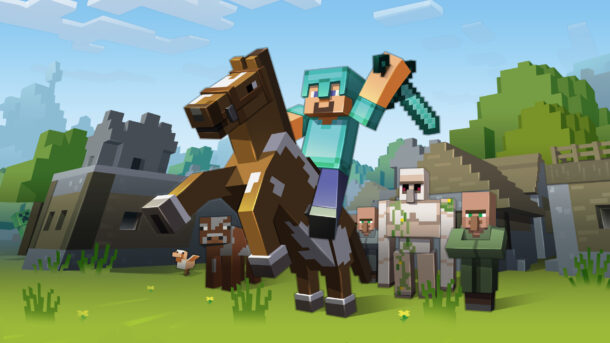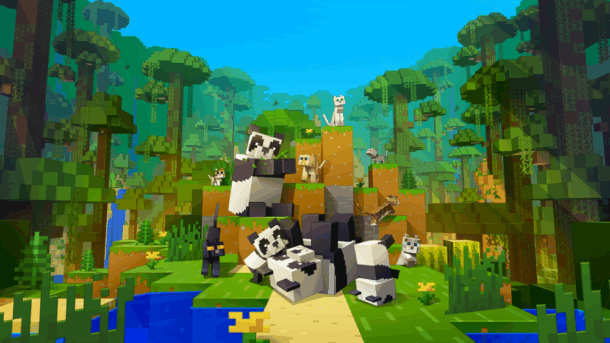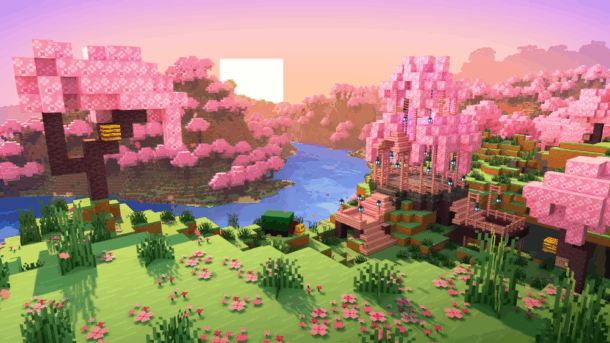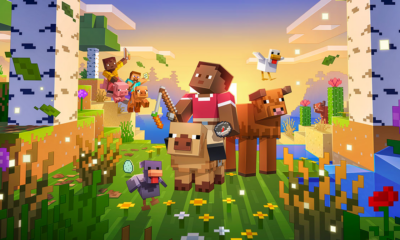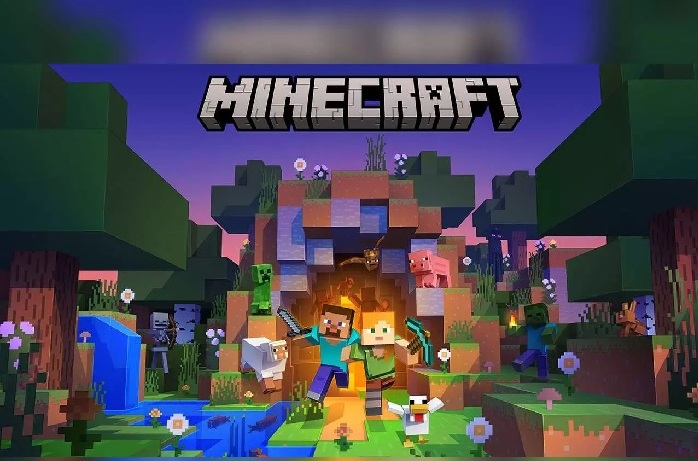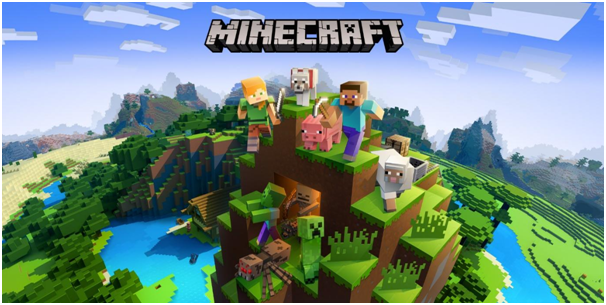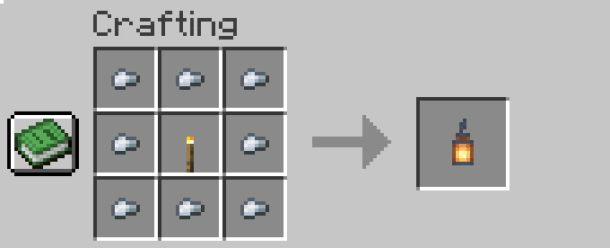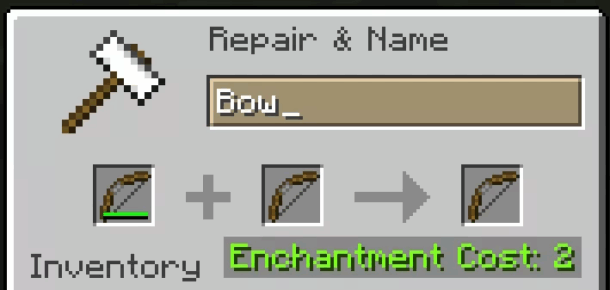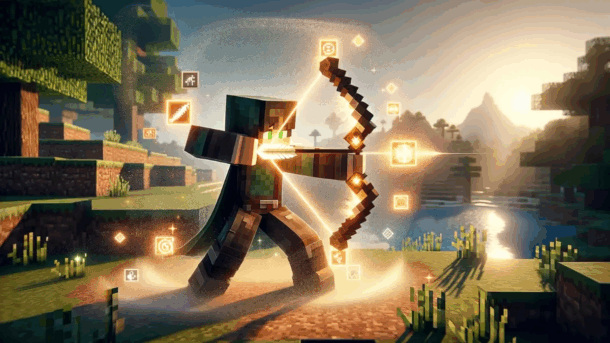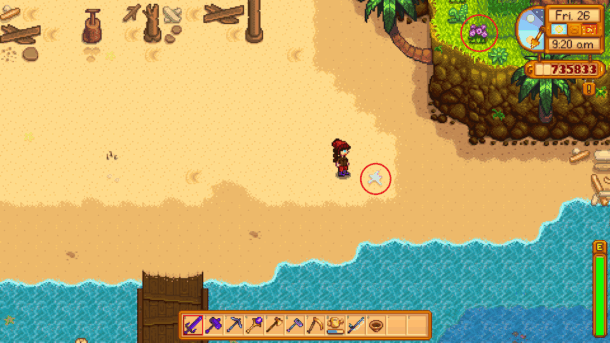Video Games
Minecraft Day Length: Understanding the Basics

Okay, so picture this. You are so locked in on your Minecraft quest, building your dream castle or mining for diamonds, and suddenly nightfall sneaks upon you, breaking your flow. Moments like these often make the gamers wonder, How long is a Minecraft day? This day-night cycle is very important in the game and often determines important bits of the game, such as when mobs spawn, how to plan your farming, and even how far you can go from your base.
Don’t worry, we have all of it covered for you in this guide. Breaking down when a Minecraft day ends to how the time cycle works and translates into the real world.
What Is a Minecraft Day?
A 24-hour Minecraft day in the game consists of sunrise, daytime, sunset, and nighttime. No,w a full day in the game is equivalent ot only 20 minutes in actual real-world time. What this means is:
- 10 minutes of daylight (safe exploration and farming time)
- 7 minutes of nighttime (danger with hostile mobs)
- 1.5 minutes of dawn (sunrise)
- 1.5 minutes of dusk (sunset)
Understanding Minecraft’s Tick System
Now, Minecraft uses or measures time using ticks. In the game, one tick is equal to 1/20th of a second in real life. Therefore, 20 ticks means 1 second in real life. So, to count a full day in-game, you have 24,000 ticks.
This system is how commands, redstone, and even mods control the flow of time. When you see numbers like /time set 6000, those ticks correspond to specific moments of the day (in this case, noon).
Phases of a Minecraft Day
Each phase of the day looks different and influences how you play:
- Dawn (0–1000 ticks | 0:00–1:00 real minutes)
This is the point in the game when the sun is rising, and the mobs begin to burn. In short, the world is safe.
- Daytime (1000–12000 ticks | 1:00–10:00 real minutes)
The skies are bright, and you can farm, build things, or explore. Most mobs don’t spawn on the surface at this time.
- Dusk (12000–14000 ticks | 10:00–11:30 real minutes)
The skies turn orange at this stage, the light level drops, and mobs will prepare to spawn now.
- Nighttime (14000–22000 ticks | 11:30–18:30 real minutes)
Remember, darkness means danger. Mobs surface in the form of zombies, skeletons, spiders, and creepers.
- Midnight (18000 ticks | ~15 minutes in)
Now the moon is fully overhead at this stage and mob density will be at its peak.
- Late Night to Sunrise (22000–24000 ticks | 18:30–20:00 real minutes)
The cycle goes back to the first moment, mobs will burn and light will appear.
Real-Time Conversion of Minecraft Days
Because the game runs on a compressed schedule, it’s useful to see how real-world minutes translate into in-game hours.
| Real Time (Minutes:Seconds) | Minecraft Time | Event |
| 0:00 | 6:00 AM | Day begins (sunrise) |
| 0:23 | ~7:00 AM | Sunrise ends |
| 5:00 | 12:00 PM | Noon (sun overhead) |
| 9:41 | ~6:00 PM | Sunset begins |
| 10:28 | ~7:00 PM | Bedtime (safe sleep) |
| 11:32 | ~8:00 PM | Night begins |
| 15:00 | 12:00 AM | Midnight |
| 18:47 | ~5:30 AM | Sunrise starts |
| 19:06 | 6:00 AM | Dawn returns |
| 20:00 | 6:00 AM | Full cycle completed |
How to Change the Length of a Minecraft Day
Not all gamers prefer the default time cycle in Minecraft; some prefer longer days to get more time to build things, and then some prefer longer nights to fight mobs. Your ideal time can be set and customized by you in this manner:
Not everyone loves the default cycle. Sometimes you want longer days for building or longer nights for fighting mobs. Minecraft gives you several ways to customize time.
1. Using Commands
- Pause the cycle: /gamerule doDaylightCycle false
- Set exact times:
- /time set day → 6:00 AM
- /time set night → 6:00 PM
- /time set 6000 → Noon
- /time set 18000 → Midnight
- /time set day → 6:00 AM
- Add time manually: /time add <ticks>
2. Using Mods and Plugins
- Day Length (Modrinth): This mod syncs the Minecraft game time with how time flows in the real world.
- Custom Time Cycle (Modrinth): This hack lets you set the game day/night at different lengths.
3. Visual Adjustments
Resource packs can’t change time speed, but they can alter sun, moon, and sky textures for a more realistic feel.
The Role of the Day-Night Cycle in Gameplay
Minecraft’s time system isn’t just for immersion—it affects almost every gameplay decision.
Mob Spawning and Combat
- Hostile mobs spawn at light level ≤ 7.
- Creepers, skeletons, zombies, and spiders spawn at night.
- Spiders are neutral during the day but hostile at night.
- Endermen teleport away when exposed to sunlight.
Farming and Food Gathering
- Crops grow under light, not direct sun, so they keep growing at night if lit with torches.
- Daytime is safer for harvesting and breeding animals.
Building and Exploration
- Daytime = safety and progress.
- Nighttime = fortify bases or fight mobs.
- Redstone daylight detectors can automate farms and lamps.
Tracking Time in Minecraft
If you want to avoid being caught off guard by time changes in Minecraft, then there are easy ways to fix it. Firstly, you can craft a clock that will show you the Sun and Moon position. Some gamers also look at the sky as key. Here, the sun overhead would mean it is noon time, and the moon overhead means midnight.
You can use the /time query daytime for exact ticks. The Scoreboards and redstone counters automate time tracking, and the statistics menu helps to check how many days you have survived and played in the game. You can also debug your screen using the F3 key only in Java Edition) which shows you the exact day and ticks.
Survival Tips for Different Day Lengths
Depending on defaults or personalized time that you spend with, the following are some strategies:
Beds are lifesavers – Avoid long nights right now.
Bring a clock – Always know how much daylight is remaining.
Light up your structures – Keep mob spawns away from and around your base.
Stay in your quarters during nighttime – Utilize evenings to craft, smelt, and sort items.
Use cheats or mods – Adjust time for relaxed building or hardcore survival challenges.
Why Minecraft Day Length is Important
Learning about the Minecraft Day length is important to enhance the gaming experience. Based on whether you customize the time or not, you can schedule when to farm and when to explore during the day. While you can be prepared for mob threats and not be ambushed in the dark.
Based on the time of the day, you can figure out at which point you should start getting back home. Time customization also means you can build a redstone system with an internal sync for day-to-night detectors, creating automation basically. All these perks let you make fewer mistakes and see the Game Over screen a lot less.
Conclusion
Just 20 minutes in the real world, with 10 minutes of daylight, 7 of darkness, and 1.5 minutes each of dawn and dusk. But more than just marking time, this cycle dictates mob spawns, farming, exploration, and planning. Whether you’re playing with the vanilla options, freezing time with commands, or increasing days to hours with mods, learning the time system of Minecraft offers a big survival advantage. Next time the sun rises over your cube-like planet, you’ll have just a flat number of ticks before shadows descend. Make the most of it, because in Minecraft, every last tick counts.
Video Games
How to Make a Lantern in Minecraft: A Bright Crafting Guide

Lighting up your Minecraft world does not have to be bland or mundane. It is important to know how to craft lanterns in minecraft if your creations are warm and calming. Lanterns bring functionality and visual personality, unlike torches or glowstone blocks. Lamps bring a constant glow and softness and sprinkles personality to any set up. Does not matter if you are beautifying a small cottage, a scary street in a village, or a giant castle, lanterns will instantly add some life to the surroundings.
In this article, we will guide you step by step from collecting materials to making the lantern itself, we promise it will make your life easier. You not only will be aware of how to light up your Minecraft world, but how to do it in style!
Why Use Lanterns Instead of Other Light Sources?
Before we go on about how to make lanterns, let’s go over why they matter. Lanterns in Minecraft are unique for many reasons:
- They emit a light level of 15, which is the greatest and is equivalent to glowstone and sea lanterns.
- You can place it anywhere: on floors, on ceilings, or suspending them, which gives you more ways to beautify than torches or glowstone blocks do.
- They last long enough, too, and are permanent: when you place them, they don’t burn out or run out of fuel.
- They also have a nice appearance: their form and gentle glow can enhance the appearance of your builds.
Thanks to such benefits, lanterns are a favorite for lighting up pathways, homes, gardens, and piers, anywhere a bright, warm light is desired.
What Do You Need to Craft a Lantern?
To make lanterns in Minecraft, you need just a few materials:
- 8 iron nuggets
- 1 torch
(Optional) Glowstone dust — used in some versions or variants.
Iron nuggets are easy to get: You can easily get iron nuggets by melting iron ingots or iron ore, or by breaking an iron tool you don’t need.
Making a torch is also easy: you need to combine sticks with coal or charcoal.
In glowstone dust-permissive versions, such as for a better or a “glow lantern” version, putting it in can alter its brightness. Certain guides instruct using glowstone dust for brightness purposes.
Step-by-Step: Crafting a Lantern
Let’s go step by step:
Open the crafting table:
You require a 3×3 crafting grid (off a crafting table, not your 2×2 inventory).
Put the Torch at the Centre:
Place a torch at the very center cell of the 3×3 square. This is your center light source.
Surround the torch with iron nuggets:
Put one iron nugget inside each of the 8 perimeter grid cells around the center ones (excluding the center). This constitutes the perimeter for the torch.
(Optional) Add Glowstone Dust:
In editions that support it, you can also throw a pinch of glowstone dust to alter the lantern’s effects. The basic recipe works without it.
Retrieve the Lantern:
It will create a lantern object in the results window. Just drag it into your inventory.
Place the Lantern:
It is possible to place a lantern on top of a solid block, sitting nicely on the floor, hanging down from beneath a block, or secured in creative ways.
That’s it—you’ve just created a lantern for Minecraft!
How to Get Glowstone Dust (If Needed)
In case your version contains a glowstone-added lantern, this is how you obtain glowstone dust:
- Proceed to the Nether, dig for glowstone blocks. A single block yields 2–4 dust.
- Place a glowstone block in a crafting grid to convert it to 4 glowstone dust
- Witch killing also has a small chance to drop glowstone dust.
When you receive glowstone dust, place it in your lantern crafting setup (according to your version’s instructions).
Variants & Editions: Lantern vs. Soul Lantern
There also exists a soul lantern variant in some versions of Minecraft, using a soul torch instead of an ordinary torch. Crafting rules are the same: encapsulate the soul torch with iron nuggets. The soul lantern emits a blueish soul fire glimmer, which might come in useful for particular builds or employing soul-themed design. The majority of tutorials and lantern crafting guides include both.
Where to Place Lanterns & Creative Tips
Having a lantern is one thing — putting it to effective use is another. Below are ideas and suggestions for placement:
- Path Lighting: Mount lanterns or hang them on fence posts on paths. This provides a welcoming and safe path.
- Under Eaves & Ceilings: Suspend lanterns below overhangs or ceilings to create ambient lighting without filling floors.
- Inside Builds: Employ lanterns within rooms, hallways, stairwells to replace torches with more elegant light sources.
- Exterior Ornamentation: Employ lanterns on outdoors walls, porches, garden arches. They surround buildings with warm light.
- Spacing: Well-spaced lanterns 8–12 blocks apart tend to work well without overwhelming.
- Symmetry & Patterns: Create symmetrical patterns of lanterns on ceilings or walls to create a refined appearance.
- Layered Lighting: Pair with sea lanterns, glowstone, redstone lamps in multi-layered lighting schemes.
Common Mistakes & Troubleshooting
To be successful when building lanterns and employing them, look for these pitfalls:
- Leaving the center slot empty instead of placing the torch.
- Using full iron ingots instead of iron nuggets. The recipe strictly needs nuggets.
- Forgetting the crafting table (the 3×3 grid is essential).
- Trying to place a lantern in mid-air (needs a block surface or hanging block).
Version differences: Some editions or updates may change mechanics, so always check your Minecraft version.
Example Build Scenario
Let’s imagine you’re building a riverside dock:
- Craft multiple lanterns using the recipe above.
- Install fence posts along the dock edge.
- Suspend lanterns off fence posts or mount them on top.
- Install glowstone or sea lanterns under water surfaces to supplement overhead lighting.
- Pair with lanterns suspended under roof edges to lead visitors to doors.
This adds function (illumination) and style (attractive glow) to your dock.
Conclusion
For illuminating and decorating your Minecraft world, learning how to craft lanterns opens up plenty of possibilities for lighting and decorating your world. From placing the lanterns along the paths, piers and ceilings to crafting a beautiful lantern with iron nuggets, they are as useful as much as gorgeous.
Lanterns use up most of the light without burning out providing an inviting and cozy glow to any structure. Whether you are lighting up a village street, your own castle, dark cage, lanterns will not just beautify and guide your way, it will also transform your Minecraft experience into unforgettable lit spaces.
Video Games
Minecraft Bow Enchantments: Everything You Need to Know

As a gamer who enjoys whittling mobs down from a safe distance, the enchanted bow is your go-to companion. Yet, with all the enchantments existing, how do you pick the correct ones? In this guide, you will discover the top bow enchantments in Minecraft, how to apply them, as well as secrets on how to create your perfect ranged weapon.
Why Bow Enchantments Matter
A simple bow is okay at first, but when mobs get harder, enchantments let you:
- Deal more damage
- Add utility such as knockback or fire
- Make it last longer so your bow doesn’t break as easily
- Lower the cost of resources (arrows or repairs)
Selecting the proper combination can turn a humble bow into a monster! Below, we will cover every potential bow enchantment, and indicate which ones are must-haves and which are situational.
All Bow Enchantments (Java & Bedrock)
Here’s a list of all the enchantments that can be placed on a bow (in the latest versions) and what they do. Information from the Minecraft Wiki and recent community sources.
Note: You can’t put Infinity and Mending on the same bow together, they are incompatible.
Also, bows cannot receive enchantments such as Sharpness or Looting, they are melee- or other weapon-specific.
How to Enchant a Bow?
There are several ways to enchant a bow:
1. Enchantment Table
Place bookshelves around the table (preferably 15) and use Lapis Lazuli + XP levels to enchant. You’ll receive three random enchantment choices.
2. Anvil + Enchanted Book
Use a bow + enchanted book to blend an enchantment. This is where you achieve enchantments not available by the table or greater control over your enchantments.
3. Commands / Creative / Give / Loot
You can spawn bows that are already enchanted in non-survival modes, or you can loot chests and receive enchanted bows.
4. Merging with Another Bow / Book
You can combine two books or two enchanted bows in an Anvil in order to level up or apply new enchantments. However, the XP cost can become high.
Which Enchantments Are Best Bow Enchantments in Minecraft?
When one asks “best bow enchantments minecraft,” one generally wants a combination that provides the best all-around performance without too many trade-offs. Here’s what the majority of experienced players would advise (and why).
Essentials
- Power V
This is likely the one most useful enchantment. A bow that deals increased damage will need fewer shots fired on mobs.
- Unbreaking III
Durability is key. With Unbreaking, your bow will degrade much slower.
- Either Infinity I or Mending I (select one)
Infinity will allow you to shoot any number of arrows you want (as long as you have one arrow). Great for resource-saving.
Mending enables your bow to self-repair via XP orbs. Very useful for durability but you have to gather XP, and you will have to keep arrows in supply.
Players argue back and forth about which is better. Consensus? If arrow supply is convenient enough, go with Mending; if saving arrows is the priority, go Infinity.
Really Handy Add-ons (If You Have Space)
- Punch II
Provides knockback to push mobs away from you, handy when battling melee mobs.
- Flame I
Incinerates targets. Nice for added damage over time or crowd control. But watch out: arrows with Flame don’t apply additional fire damage in rain or when traveling through water.
- Avoid Curse of Vanishing
Unless you have a really excellent reason, this enchantment nearly always fails (losing your bow when you die).
Sample “Best Bow” Builds & Combos
These are some well-liked and useful combinations:
- PvP / Combat Build
Power V + Unbreaking III + Infinity I + Punch II
This build provides high damage, toughness, and free arrows—ideal for combat against mobs or other players. (Dropping Flame is commonly a good idea in PvP to prevent flame damage from obscuring sight.)
- Explorer / Longevity Build
Power V + Unbreaking III + Mending I + Flame I
You sacrifice infinite arrows for longevity and healing. Flame provides some added damage. Suitable if you are adventuring or don’t want to carry arrows.
- Utility / Crowd Control Build
Power V + Unbreaking III + Punch II + Flame I
More aimed at mob control in close proximity or burning damage applied over time.
In every build, Power V + Unbreaking III are the cornerstone , everything else is built off of that foundation.
Pro Tips & Tricks
- Farm Experience Efficiently
If you choose Mending, then you will require consistent XP on repairs. Farm XP through mob farms, smelting, or by trading.
- +Use a Grindstone Carefully
When you receive an undesirable enchant, you can strip all the enchantments (wasting XP) on a grindstone. Handy when you wish to re-roll better enchantments.
- Strategic Integration in Anvil
Books/bows combine at the expense of XP, and the “prior work penalty” boosts the price. Plans combine meticulously from least to greatest.
- Collect Backup Bows
Even with Mending, you will still, every now and then, desire a backup enchanted bow (or a second bow that has a subset of the enchantments) when on extremely prolonged quests from base.
- Rain & Water Caveats
- Flame effect is nullified in rain or water.
- Not compatible with tipped or spectrum arrows.
- Always be sure to carry one normal arrow when you carry Infinity.
- Do not combine Infinity + Mending
Since these can’t be combined, the two will either raise an error or just not be applied. Decide beforehand which one you want.
Common Mistakes & Misconceptions
- “More enchantments = better bow”
Not necessarily. Certain charms are incompatible, and loading up your bow can cause joining too costly or impractical.
- Ignoring durability
An unyielding bow that will break during the middle of a battle is ineffective. Always put Unbreaking (or Mending or Infinity) first at low levels.
- Poor planning on arrow supply
If you go Mending, then you will need to maintain stock in arrows. Do not let that constrict your inventory.
- Flame Use Where It is Inefficient
Flame is ineffective in marine or rainy biomes. It should be left unplayed sometimes.
Final Thoughts
When making your dream bow, choose the middle path between damage, survivability, and usability. Common opinion is that Power V + Unbreaking III will always be on your bow. Then choose Infinity I or Mending I, as you desire, between never-running-out arrows or self-repairing durability. Punch II and Flame I can then be added, as desired, next.
If you are asking yourself “what are the best bow enchantments in Minecraft?” The answer is not universal, but the following combinations represent what many veterans consider the best.
Experimentation is everything with Minecraft. Never be afraid to try things out and test your bow combinations. You could end up making the bow your go-to weapon!
Video Games
How Many Purple Flowers and Starfish Are on Ginger Island in Stardew Valley?

Stardew Valley is one of those retro games that keep coming back stronger with its updates. The latest Update, 1.5, Ginger Island, comes as a new addition bringing in new crops, puzzles, and hidden treasures. This new update also brings in a slightly new challenge, the Island Survey.
In this task, players are asked to count the purple flowers and purple starfish scattered across Ginger Island. While at first glance, it may sound like an easy task, it is trickier than you think. The purple flowers blend into the jungle, and starfish keep disappearing into the sandy beaches. To make all of this worse, you only get one attempt at guessing per day. So if you get it wrong once, you have to try it all over again tomorrow.
But, you don’t have to worry because this article here will help you out to know how many purple flowers are on Ginger Island and where to find your own purple starfish. We know all the exact numbers, hiding spots, and other tips to help you complete the Island Survey task.
What Is the Island Survey in Stardew Valley?
Before moving into the main bit, if you haven’t yet reached the Island Survey stage, here is a quick gist of how to unlock it. Once you free Professor Snail from the cave, which is near the Dig Site, he sets up a test near the Island Field Office on northern Ginger Island. Here, he runs a survey for all players.
These surveys are simple nature-themed quizzes where you are asked two questions:
- How many purple flowers are on Ginger Island?
- How many purple starfish are on Ginger Island?
As mentioned, you get only one chance to answer one survey per day. If you get it wrong, you have to wait until the next in-game day to try again. It is not a big deal, but it means that guessing it blindly is wasting a day’s worth of time.
Answering and completing the survey gives you Golden Walnuts, which, as you may know, is the main currency on Ginger Island. Parrots use them to unlock bridges, shortcuts, and even entire buildings. So while counting flowers may sound like a silly task, it is an important task towards exploring everything the island has to offer.
How Many Purple Flowers Are on Ginger Island?
Correct Answer: 22
Yes, the official count is twenty-two. These flowers cannot be picked, harvested, or interacted with in any way. They exist purely for this quirky little survey. The main challenge is spotting them since they are spread across multiple biomes, often tucked behind cliffs, trees, or rocks.
Where Are the Purple Flowers Found?
Here is the regional breakdown of all 22 purple flowers:
- Island North – 6 flowers
- Island West (Jungle) – 5 flowers
- Island East – 4 flowers
- Island South – 2 flowers
- Volcano Caldera – 3 flowers
- Hidden Nooks/Pond Areas – 2 flowers
Tips for Spotting the Flowers
- Zoom your screen out in the game settings to see more terrain at once.
- Pause briefly when moving between zones so you don’t miss flowers on the edges.
- Look behind trees, cliffs, or partially obscured spots. Some flowers are sneaky.
If you counted yourself and came up with 21 or 23, don’t worry. Most players miss one or two on their first attempt. That is why having the exact number helps so much.
How Many Purple Starfish Are on Ginger Island?
Correct Answer: 18
The purple starfish are a little different from the flowers. Instead of being scattered in jungles and cliffs, they lie along the sandy beaches around the island. They are purely decorative, much like the flowers, and cannot be picked up or interacted with.
The challenge here is visibility. Starfish blend into the pale sand, and depending on the lighting, shadows can make them tough to notice.
Where Can You Find the Starfish?
There is no official map showing their locations, but you can reliably spot them in these areas:
- Southern beaches near the docks
- Eastern shoreline around the coral gardens
- Western coast near the Island Farm
- Small alcoves on the northern beaches
By carefully checking these regions, you would eventually tally all 18. Or you could save yourself the effort and simply trust the correct number.
Step-by-Step Guide to Completing the Survey
Here is the quick version of how to knock this quest out:
- Free Professor Snail
- Repair the bridge at the Dig Site with 10 Golden Walnuts.
- Use a bomb to clear the rock blocking the cave where he is trapped.
- Repair the bridge at the Dig Site with 10 Golden Walnuts.
- Visit the Island Field Office
- Once freed, Snail sets up a tent in Ginger Island North.
- Once freed, Snail sets up a tent in Ginger Island North.
- Take the Island Survey
- Answer one of the two questions each day.
- Answer one of the two questions each day.
- Input the Correct Answers
- Purple Flowers: 22
- Purple Starfish: 18
- Purple Flowers: 22
- Claim Your Rewards
- Each correct answer earns you 1 Golden Walnut. That makes 2 total.
- Each correct answer earns you 1 Golden Walnut. That makes 2 total.
What Do You Get for Completing the Survey?
The obvious prize is the two Golden Walnuts, but the survey also ties into the bigger Ginger Island progression system. Here is what you gain:
- 1 Golden Walnut for each correct answer (2 total)
- Progress toward full Field Office completion
- Unlocking the Ostrich Incubator recipe once you complete surveys and fossil collections
Professor Snail also manages the fossil donation system. He provides hints about where to dig up snake, bat, frog, and large animal fossils. Completing all fossil collections rewards even more Golden Walnuts and eventually unlocks the Ostrich Incubator, which lets you hatch ostriches as farm animals back home.
So while the survey itself may seem minor, it is a necessary step for completionists and anyone chasing endgame rewards.
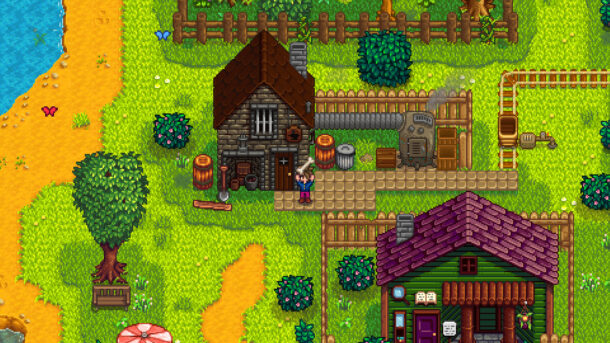
FAQ: Purple Flowers and Starfish in Stardew Valley
Do the flower and starfish counts ever change?
No. The numbers are fixed. It will always be 22 flowers and 18 starfish.
Can you get hints in the game?
No direct hints. If you get it wrong, you just have to try again the next day.
What happens if you guess incorrectly?
Nothing too harsh. You simply cannot answer again until the following in-game day.
Are the flowers or starfish used for crafting or quests elsewhere?
No. They only exist for this survey.
Why bother with the survey if it is only two walnuts?
Because every walnut counts. You need a large number of them to unlock everything Ginger Island has to offer. Plus, completing the survey is required to get the Ostrich Incubator recipe.
Why This Little Quest Matters
Stardew Valley has always been about the small details. The Island Survey is a perfect example. It is not a major storyline quest, nor does it unlock anything dramatic on its own. But it adds a layer of charm and curiosity to Ginger Island.
Instead of swinging a sword in the Volcano Dungeon or racing to unlock the Farmhouse, here you are counting flowers and starfish, noticing tiny design choices that most games would ignore. It is quirky, yes, but also a reminder of why players fall in love with Stardew Valley in the first place.
Final Answer
To save you the trouble of counting, here are the official numbers once again:
- Purple Flowers on Ginger Island: 22
- Purple Starfish on Ginger Island: 18
Now you can walk into the Island Field Office, give Professor Snail the right answers, and collect your Golden Walnuts without delay.
So the next time you wander through Ginger Island, maybe take a moment to appreciate the scenery. Those little purple flowers and starfish are not just background decorations. They are tiny pieces of a puzzle that tie into the bigger world of Stardew Valley.
-

 Guides6 years ago
Guides6 years ago6 Proven Ways to Get more Instagram Likes on your Business Account
-
Mainstream11 years ago
BioWare: Mass Effect 4 to Benefit From Dropping Last-Gen, Will Not Share Template With Dragon Age: Inquisition
-

 Mainstream7 years ago
Mainstream7 years agoHow to Buy Property & Safe Houses in GTA 5 (Grand Theft Auto 5)
-

 Guides1 year ago
Guides1 year agoFree Fire vs PUBG: Comparing Graphics, Gameplay, and More
-

 Casual2 years ago
Casual2 years ago8 Ways to Fix Over-Extrusion and Under-Extrusion in 3D Printing
-
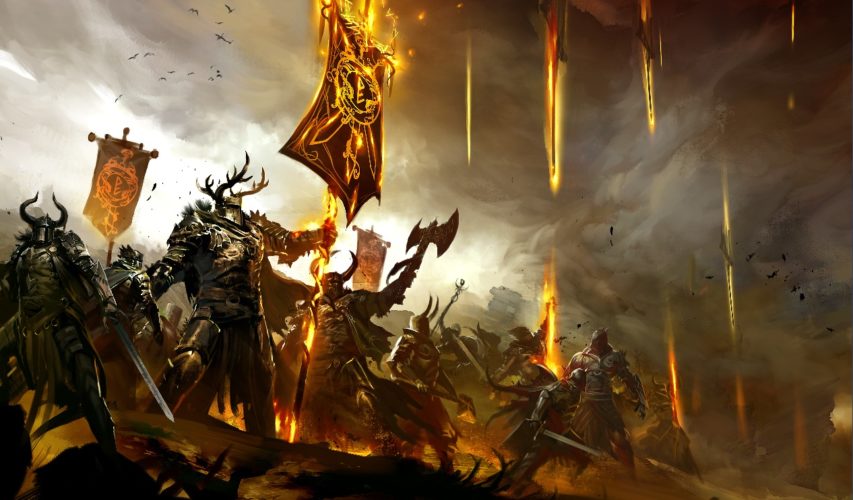
 Mainstream13 years ago
Mainstream13 years agoGuild Wars 2: The eSports Dream and the sPvP Tragedy
-

 Other2 years ago
Other2 years agoAjjubhai UID: Free Fire Details & Earnings
-

 Guides10 months ago
Guides10 months ago50+ Free Fire ID and Passwords Login List (Giveaway) 2025

